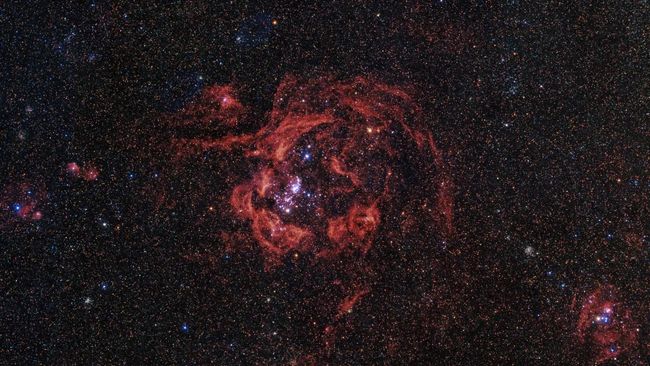The Andromeda Galaxy Shines in Rosy Red in Stunning New Hubble Telescope Image
New star formation sets the galaxy ablaze.

As part of the new year celebration, Hubble Space Telescope has photographed fresh image showing the pinkish formations on the Andromeda Galaxy that is a neighbor to our Milky Way, and is twice the size of it. 5 million light-years away. About 152,000 light years across and with a mass of about the Milky Way the Andromeda galaxy is presented here in great detail this picture was released on 30/8. The picture focuses on the northeastern quadrant of the galaxy: spiral patterns of glowing blue and gold represent the spirals and the pinks represent vast clouds of ionized gases on which stars are formed.
Explaining its description, NASA officials said that ‘The interaction between the star nurseries and supernovas provides a dynamic setting in which the supply of hydrogen gas becomes activated putting up a garden of roses studded with stars. ’
This allowed scientists to look beyond the young interstellar cloud and to concentrate on Andromeda’s spiral structure, which contains a detailed array of stars; the data were collected by employing the Hubble’s ACS and WFC3 devices.
“With the range of stars covered in this study being so vast, it not only provides a closer look into the characteristics of stars in Andromeda, but it also opens a wider understanding of stars formation and evolution process,” officials of NASA explained.
Studying the stars in the nearby space our researchers can learn more about those located in the distant galaxies of the universe.
At present, Andromeda is thought to be slowly approaching the Milky Way thanks to the galaxies’ mutual attraction and the dark matter halo. The fusion of these galaxies is anticipated to cause a direct confrontation of the parents in between 2-4 billions of years from now, thereby changing the morphology in the existing structures completely. However recent works have cast doubts regarding the probabilities of this merging and hence the future of such galaxies is in jeopardy.
Do not forget to share your opinion with us to provide you with the best posts !



0 Comments